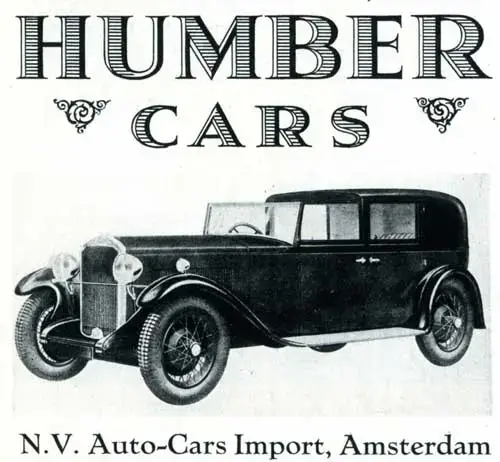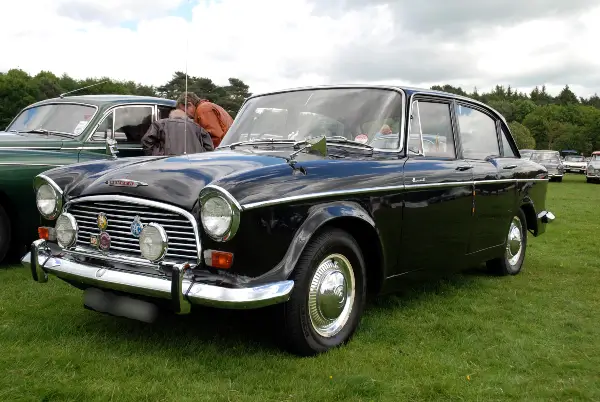Humber Tyres

Humber Period Advert
Classic Humber Tyres
On the following pages, Longstone Classic Tyres give classic tyre fitment recommendations for Humber cars.
If your car is not listed, don't panic! Please give us a call on:
01302 711 123
or
Email: sales@longstonetyres.co.uk
Vintage Humber Tyres
Whether you drive a Humber Hawk I, Humber Hawk II, Humber Hawk III, Humber Hawk IV, Humber Hawk V, Humber Hawk VI, Humber Snipe, Humber Super Snipe, Humber Imperial, Humber Sceptre I, Humber Sceptre II, Humber Sceptre III we have your tyre needs covered at Longstone Classic Tyres.
Humber Tyres
The following list are our recommendations for your Humber:
- 185 SR 16 Michelin X for a Humber Hawk I, II, II & Snipe (Pre-1948).
- 185 VR 15 PIRELLI CINTURATO CA67 for a Hawk IV, V, VI, Super Snipe (1960) & Imperial.
- 165 HR 13 Michelin XAS FF for a Sceptre I, II.
- 155 HR 13 Michelin XAS FF for a Sceptre III.
Humber History
Humber Limited was a British manufacturer of bicycles, motorcycles, and motor vehicles founded in 1887. At Humber & Company's general meeting in 1897, the managing director stated that they had received numerous letters asking if they would produce a motorised car, they had been working on this project for two years but had delayed production until they found a suitably reliable engine. They were preparing for manufacturing now that they had located an engine. The first Humber automobile, a three-wheeled tricar, was built in 1898. In 1901, they produced their first conventional four-wheeled automobile.

By 1911, Humber had developed a broad range of automobiles, stretching from the 600 cc Humberette to multiple six-cylinder 6-litre versions. In 1913, Humber was the second-largest vehicle manufacturer in the United Kingdom, trailing only Wolseley. Hillman, which was controlled by the Rootes brothers, merged with Humber in 1929—the combine was not controlled by the Rootes brothers—but William Rootes' marketing abilities were immediately put to use when Rootes Limited was designated "World Exporters" In December 1929, after analysing the 1929 year, the chairman informed shareholders that Humber had released three new models: 16-50 for the 1928 Motor Show, Snipe and a seven-seater Pullman for the October 1929 Motor Show. For the time being, the 9-28 and 20-65 hp versions would be offered at a lower price.
Humber's independence ended in 1931 when the Rootes brothers purchased a controlling stake with the help of Prudential Assurance. They contributed their Hillman shares as part of the payment. The Ryton on Dunsmore facility, which closed at the end of 2006, began in 1939 as one of the so-called shadow factories: the Ryton plant was initially constructed to manufacture aviation engines. In April 1939, another shadow plant began in Speke, Liverpool, to construct bombers. The existing factories produced armoured cars, scout cars, and staff cars, as well as a variety of other combat materials.
During WWII's Desert War, General Montgomery, Commander of the British and Allied forces in Northern Africa, had two specially manufactured Humber Super Snipe four-door open tourers built with enlarged front wings or guards, mine proof flooring, unique fittings, and long-range fuel tanks. He had two automobiles made for him and utilised them in the Africa war against General Rommel, who drove a Horch open staff car. Montgomery's Humbers were dubbed "Old Faithful" and "Victory Car." Both automobiles are still on display in museums in England and are testaments to Humber and Rootes Ltd's strong engineering and manufacturing standards. During the VE ceremonies at the conclusion of WWII, Montgomery and Churchill rode in the victory car through the streets of London.
Humber's primary products in the postwar era included the four-cylinder Hawk and six-cylinder Super Snipe. Humber developed a reputation for well-appointed interiors and robust craftsmanship as a favourite of businesspeople and officials alike. The Hawk and Super Snipe went through several design iterations, all of which had a "transatlantic" effect. Rootes was the world's eleventh largest motor business by volume in 1960, with approximately 200,000 automobiles, vans, and trucks produced each year. They employed around 20,000 workers. The series VA Super Snipe (equipped with two Stromberg CD 100 Carburettors) was the last of the classic big Humbers to be marketed in 1968, when Chrysler discontinued manufacture. Several V8 models were in pre-production at the time, but they were never offered publicly. Several of these test instances have survived to the present day.
The second-generation Humber Sceptre, a version of the Rootes Arrow, was the company's final new car. The Hillman brand was discontinued in 1976 when all Hillmans were rebadged Chryslers. The Hillman Hunter (another Arrow type) was badged Chrysler until 1979 when Chrysler's European operation was sold to Peugeot and the nameplate was renamed Talbot. The Talbot marque was discontinued on passenger vehicles at the end of 1986, although it was kept on vans for another six years.
